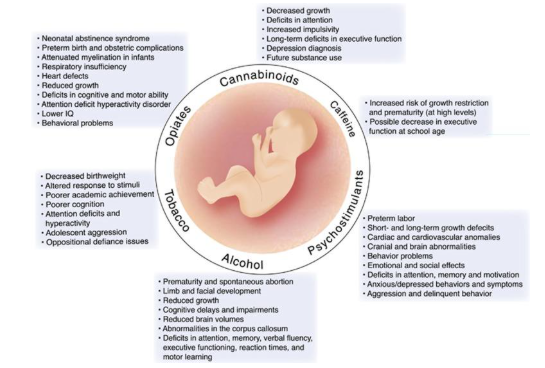Obsessive. That is one word across the board that people with eating disorders think of when it comes to their disease. It’s completely correct. There are no other words that could encapsulate the shame and guilt that rattles those isolated by the deeply intolerable conditions.
“Why can’t you just be normal?” is a common thing said to those who are struggling. No matter how deeply they yearn for normalcy, they are unable to beat the all consuming dread surrounding food.
One in Ten teen girls struggle with an eating disorder, and these numbers have only risen the past few years, the same goes for people of the opposite gender. These are isolating and obsessive disorders that thrive on insecurities. 
Even with these numbers skyrocketing, what is more prevalent in American culture is disordered eating, rather than eating disorders. While these two things may sound the same, they are very different.
Disordered eating is when someone has a lot of the habits as someone with an eating disorder, but it isn’t quite to the extent that they face. While these are still very dangerous, they don’t always need professional care, and can be resolved through the assistance of friends and family.
“Even if a person ‘googles’ eating disorder and fits the entire criteria of the problem does NOT mean you don’t need to seek professional help. Rather, it is when the struggles are not as severe and significant that lasting change can happen much more swiftly,” said Carrie Binegar a Mental Health Counselor at Adams Memorial Hospital.
She goes on to compare disordered eating versus eating disorders to a scraped knee versus a severe leg injury. This metaphor demonstrates that some ailments can be treated relatively easily, while others require intensive care.
However, this isn’t diminishing for people who struggle with disordered eating. It’s still a mountain of a struggle to overcome and change unhealthy habits.
“My eating disorder is really complex,” said Parker Studebaker, who is in recovery from anorexia nervosa. “There are definitely layers to it. It’s not only the body image issues that affect it, there is a part of me that doesn’t feel like I deserve to eat.”
This is a really common theme that specialists have picked up on when treating their patients. It isn’t usually one guiding force leading their obsessive tendencies, it’s a multitude of things.
The culture in the United States tends to prioritize physical appearance. If that were the sole influence, anyone whose genetic traits do not align with the preferred standards would likely suffer from an eating disorder. During a child’s or teenager’s upbringing, it is crucial to promote messages of unconditional self-acceptance.
“It is in the early years of brain development that one learns their true value and purpose, gaining clarity of individuality of roles, skills, capacities and purposes that goes well beyond what society tries to dictate for a person,” said Binegar.
Without a foundation of parents or other important people in children’s lives enforcing the idea that their body is healthy, and that there is nothing wrong with them, kids are more likely to take on negative views of their bodies whether it’s from peers bullying them, or society in general enforcing the idea of a specific body type and size.

“In society we push women to view it as a form of currency. If you are beautiful enough and skinny enough a man will love you and want you as his wife. But only if you act and behave a certain way. If you don’t, you are not worth much,” said Melissa Borton, Family Therapist.
Borton emphasizes the dangers of this toxic comparison, urging a shift in perspective.
We measure ourselves against something extremely harmful, which can harm our minds and bodies. It’s essential for us to embrace and appreciate one another, and to build confidence in our true selves.
“I would make sure they knew that relapse is part of recovery,” Studebaker said. “Recovery isn’t linear, and there are definitely times where you will regress in progress.”
Relapse being part of recovery is a huge saying in the mental health world, and Parker explained his thoughts perfectly.
Eating disorders are really interesting in a way, because while some make the active decision to go further down the spiral into their unhealthy habits, others are unaware of their tendencies completely.

“When I first developed these habits, I didn’t do it with the mindset of having to lose weight, or needing control. It was more so that I just forgot to eat.” Studebaker said. “But as I continued to restrict and started noticing that I had lost weight, it motivated me to continue to do this myself.”
Growing up engrossed in a society obsessed with weight and looks can seem all consuming at times, pressure being on everyone to fit into a specific mold that is almost completely unattainable and impossible for many people.
A common theme in media like books, movies, and television shows about teenagers revolves around eating disorders.
This could be for a multitude of reasons, but in both the comic book and screen adaptation of “Heartstopper” produced and written by Alice Osman, it serves as a way of spreading awareness while simultaneously depicting an accurate representation of anorexia nervosa.
The main character, Charlie Spring, is the person with these habits, and we see how both he and the people around him are affected by his condition. This includes moments like when he gets dizzy and faints on a school trip due to malnutrition, and when he separates himself from the people around him in order to be alone at lunch.
At the peak of his eating disorder, the isolating nature and anger around his body comes to light, and he finally talks to his parents about treatment options. The audience watches his recovery process as he goes to residential, and sees so clearly the struggles he goes through when trying to recover.
Studebaker described it as the most accurate representation he’s seen of an eating disorder in the media, saying at times it was difficult to watch due to how deeply he resonated with Charlie. It also serves as one of the first times that a teen boy is struggling with an eating disorder in a television show, which is commonly seen as very taboo.
An aspect of eating disorders that isn’t really explored much in the Heartstopper franchise is social media’s effect on disordered eating habits and people in general. Social media, specifically on platforms like Tiktok with hashtags trending like “skinnytok” encouraging people to go further down the spiral of these habits.
When consuming content like this, someone who is struggling with their eating disorders are enabled to fall even further into it, not getting support, but instead encouragement to get thinner and look better. This is the exact opposite of what should be happening.
“Media constantly puts content in front of consumers that is appealing and desirable. By the very nature of our brain wiring, humans are drawn towards that which seems pleasing and accepted by standards of those close to us, while sensations are ignited to move away (anxiousness, preoccupation, unsettledness) from that which is aversive,” said Binegar.
It’s crucial to find a balance between content that is educational versus content that is promoting eating disorders. Usually this line is very thin, as is evident by the widespread debate about educational mental health content in general. 
Learning about eating disorders won’t inadvertently give someone an eating disorder, though. The same goes for other types of mental health conditions. If these are painted in a positive light even slightly, or as a solution to being overweight, the person consuming this content could easily question whether they want to indulge in these behaviors they didn’t previously know about.
It doesn’t matter what your opinion is on this content though, everyone can agree that something has to change.
Nine percent of Americans, which is 30 million people, will struggle with an eating disorder in their lifetime. The culture surrounding outward appearance is detrimental to the mind and body of these mass amounts of people.
As an American society, we should question the standards we conform to, and find a way to become more accepting of everyone, eating disorder or not.
Whether this is by reporting and blocking influencers promoting unhealthy lifestyles, or finding ways to support the people in your life who have eating disorders, it is evident that something isn’t working.






